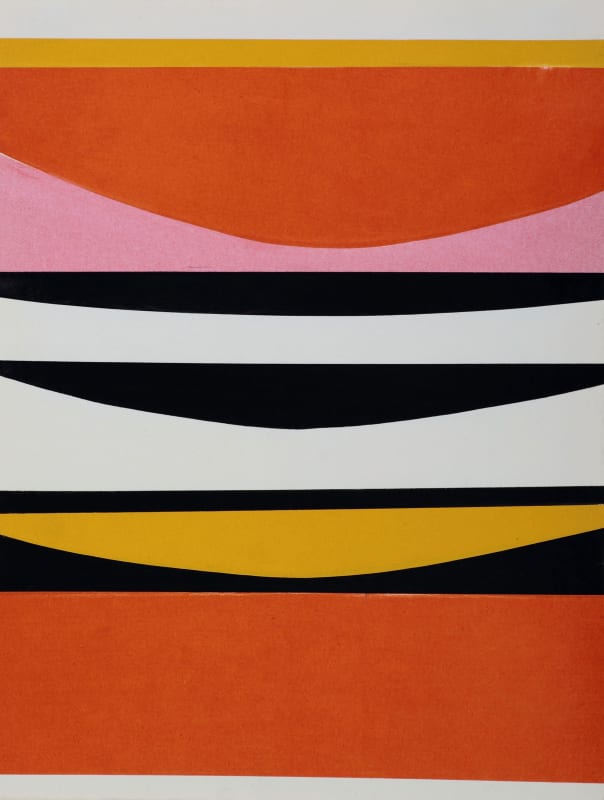- X
- Tumblr
At David Hall Gallery, the painter’s big ideas come in small pictures
WELLESLEY — ”Ralph Coburn: Big Ideas, Small Pictures” at David Hall Gallery offers a glimpse at the work of a pioneer who flew beneath the radar.
The painter, who died at 94 in 2018, came of age at the height of Abstract Expressionism. But Coburn, who studied architecture at MIT, tacked toward cooler minimalist ideas.
His importance has grown in the last decade. He was a forefather of participatory art. His first national exhibit, in 2017 at the Arts Club of Chicago, featured moveable paintings and changeable collages.
In 1949, his friend Ellsworth Kelly invited Coburn to Paris, and art cracked open for him. While American artists were pouring their psyches onto the canvas, many European artists were caught up in the conceptualism of Dada and Surrealism. Coburn and Kelly used form and color to distill whatever they chanced to see. Kelly went on to become a giant of lean geometric abstraction.
Coburn returned to Boston in the mid 1950s and eventually worked at MIT as a graphic designer, where he helped lead a modernist revolution in typography. Graphic designer and scholar Dietmar R. Winkler has called him “truly an unsung hero of the MIT Office of Publication.” The grid was essential to Coburn’s design, and to his art. Sometimes, his landscapes refract kaleidoscopically through them, as in “Autumn Leaf #7,″ from 1979.
This show mostly highlights early work. Drawings from France, such as 1949′s “Paris View,” dance and spin. The Eiffel Tower and its reflection in the Seine create a star in thick black contours. But how to abstract light in black and white? Thinner lines suggest the sun’s rays streaming down and coursing along the river. The whole thing never stops moving.
The sunset image “Collage, Sanary,” made in Sanary-sur-mer during the early 1950s, pares light into color. Great arced rows of orange, pink, yellow, white, and black have the lazy rhythm of a trampoline in use.
The artist used form and color to clear clutter and find essential tensions in street scenes and landscapes. But the sheer economy of 1950′s “Paris Building Distillation” belies its craft. A fine layer of gesso on the painting’s wooden substrate reads like snow dust; a windowpane painted at the top is slightly whiter, as if rimed with ice.
Coburn may have been understated, but his art speaks clearly, and deserves attention.
RALPH COBURN: BIG IDEAS, SMALL PICTURES
At David Hall Gallery, 555 Washington St., Wellesley, through Jan. 27. https://davidhallgallery.com/
Cate McQuaid can be reached at catemcquaid@gmail.com. Follow her on Twitter @cmcq.

